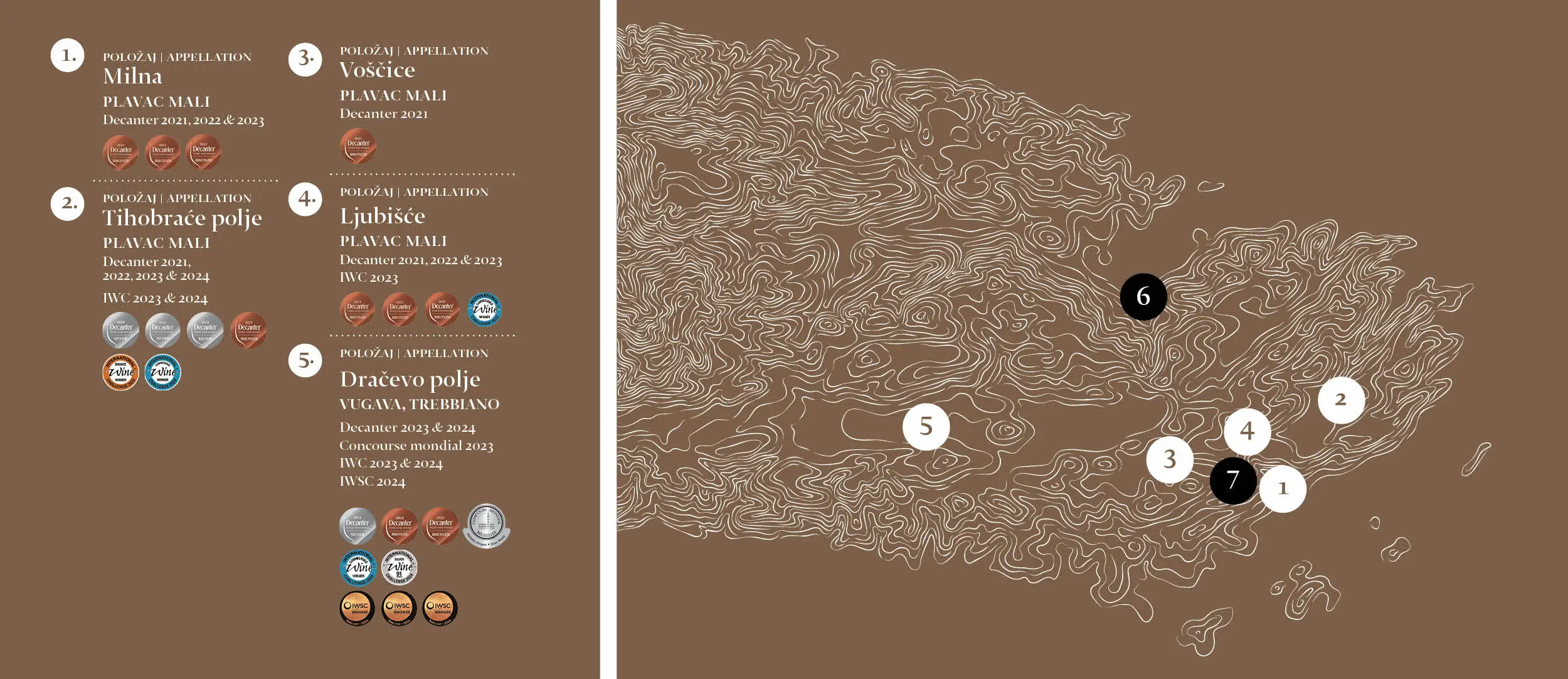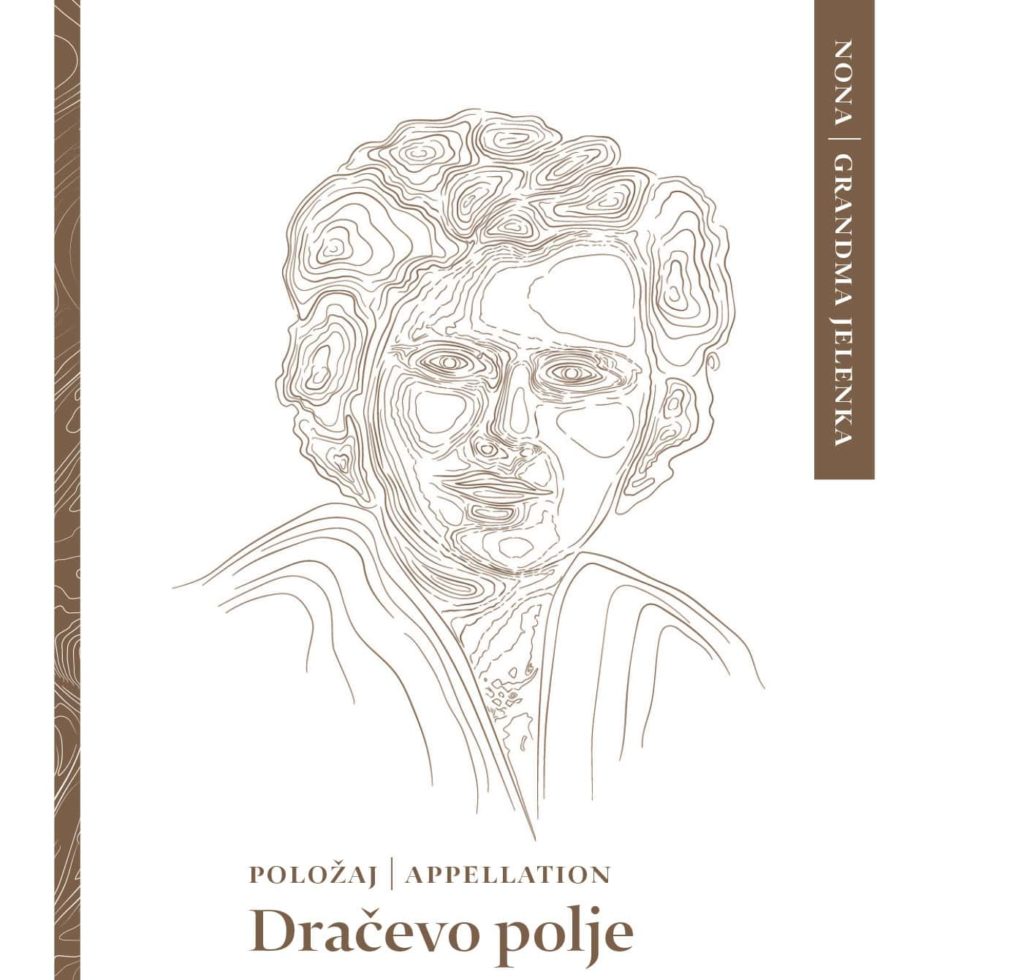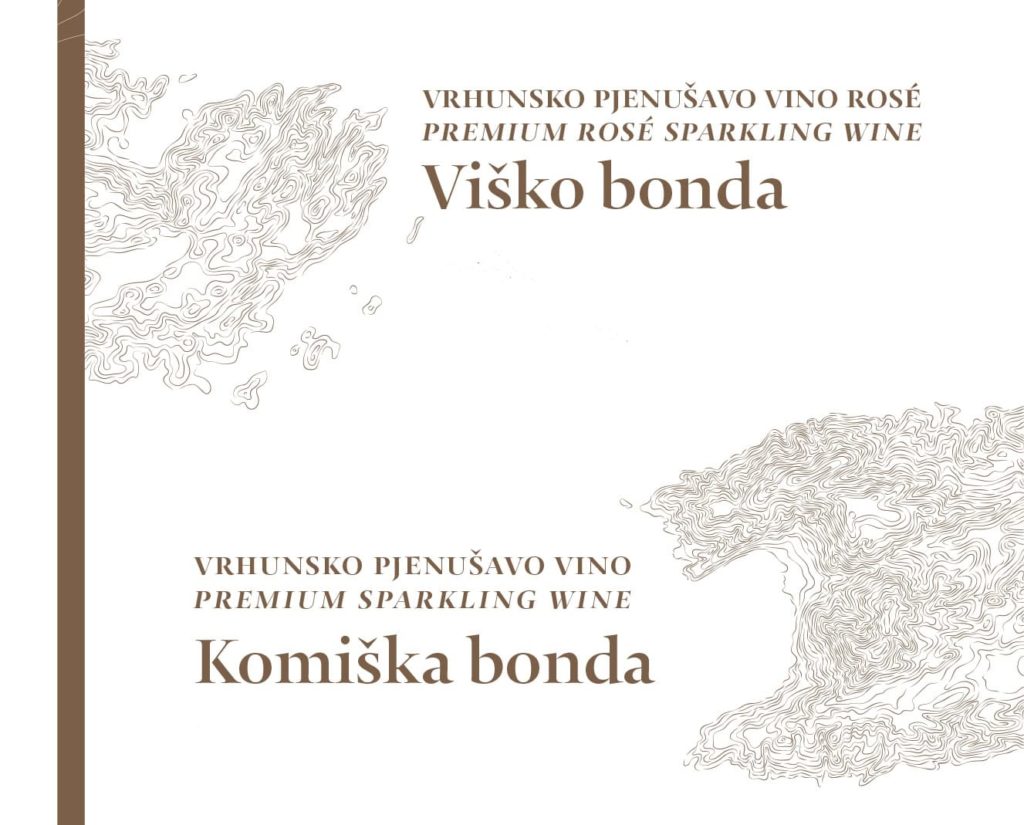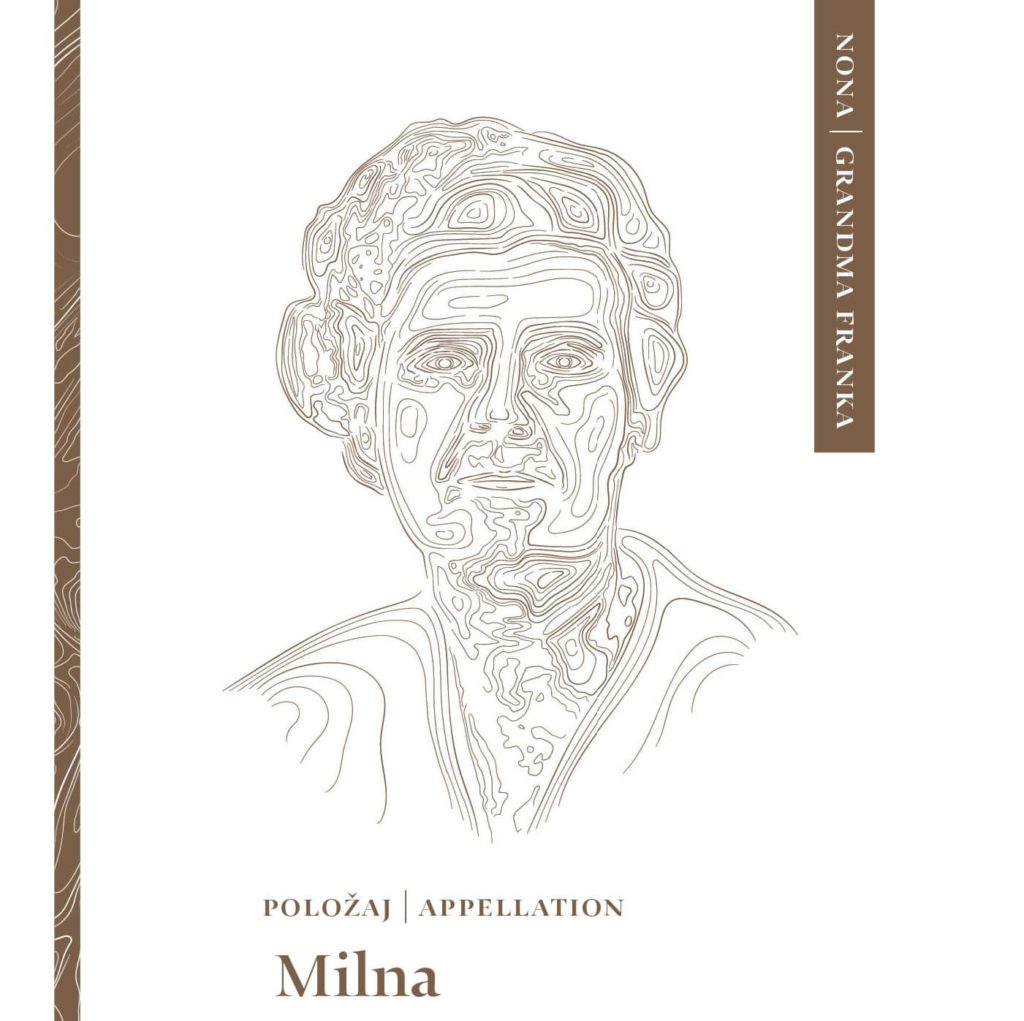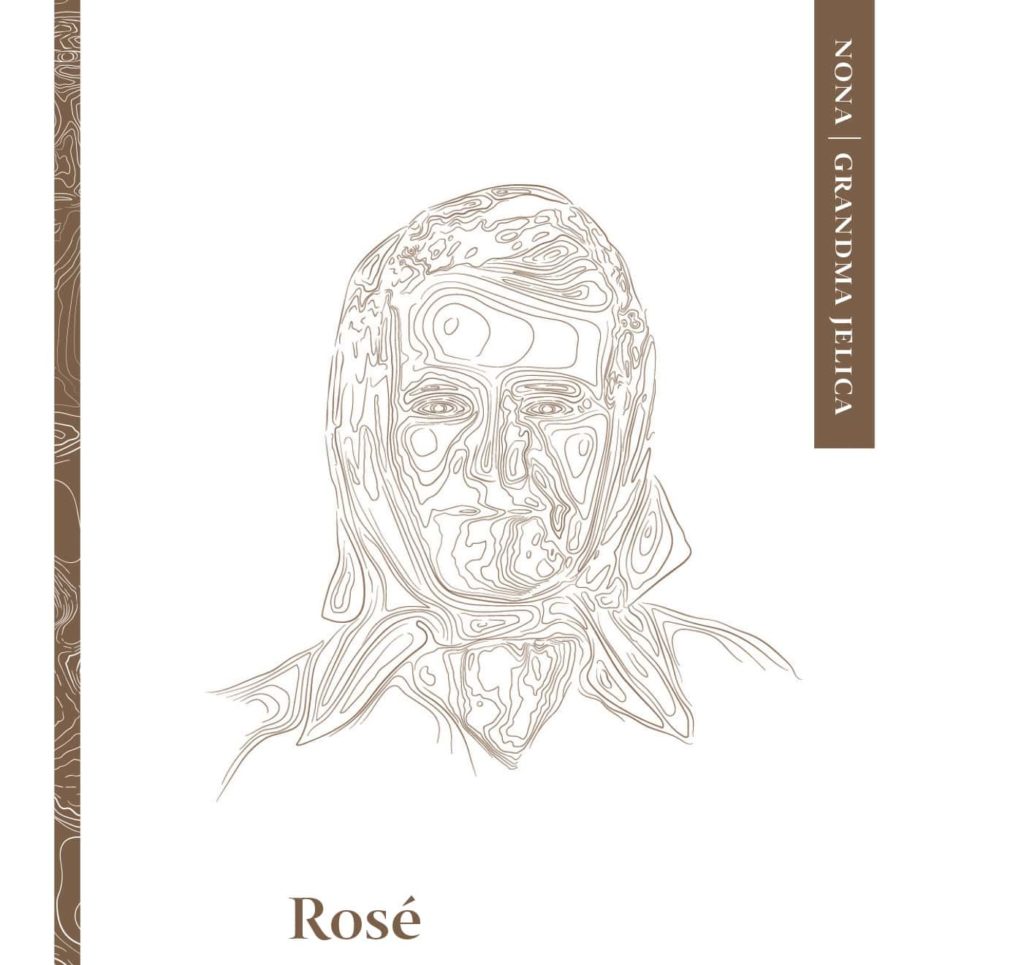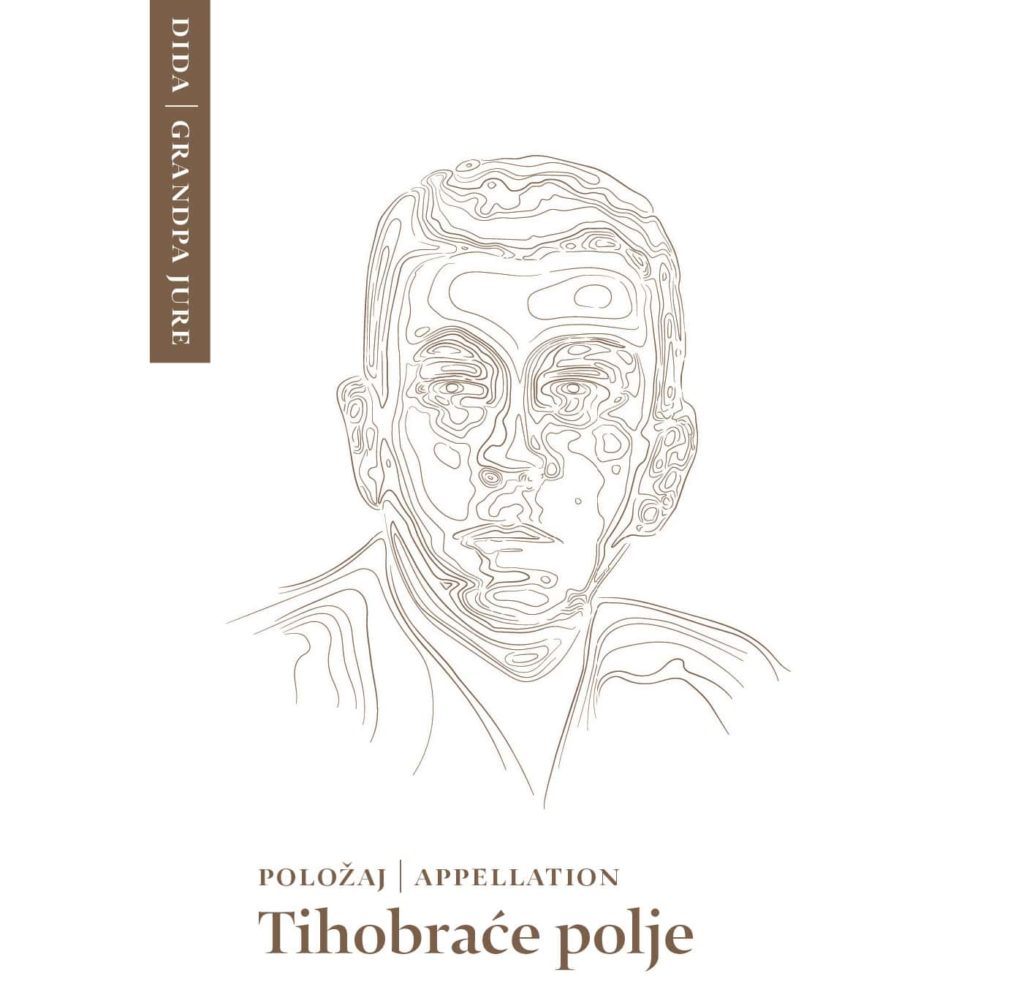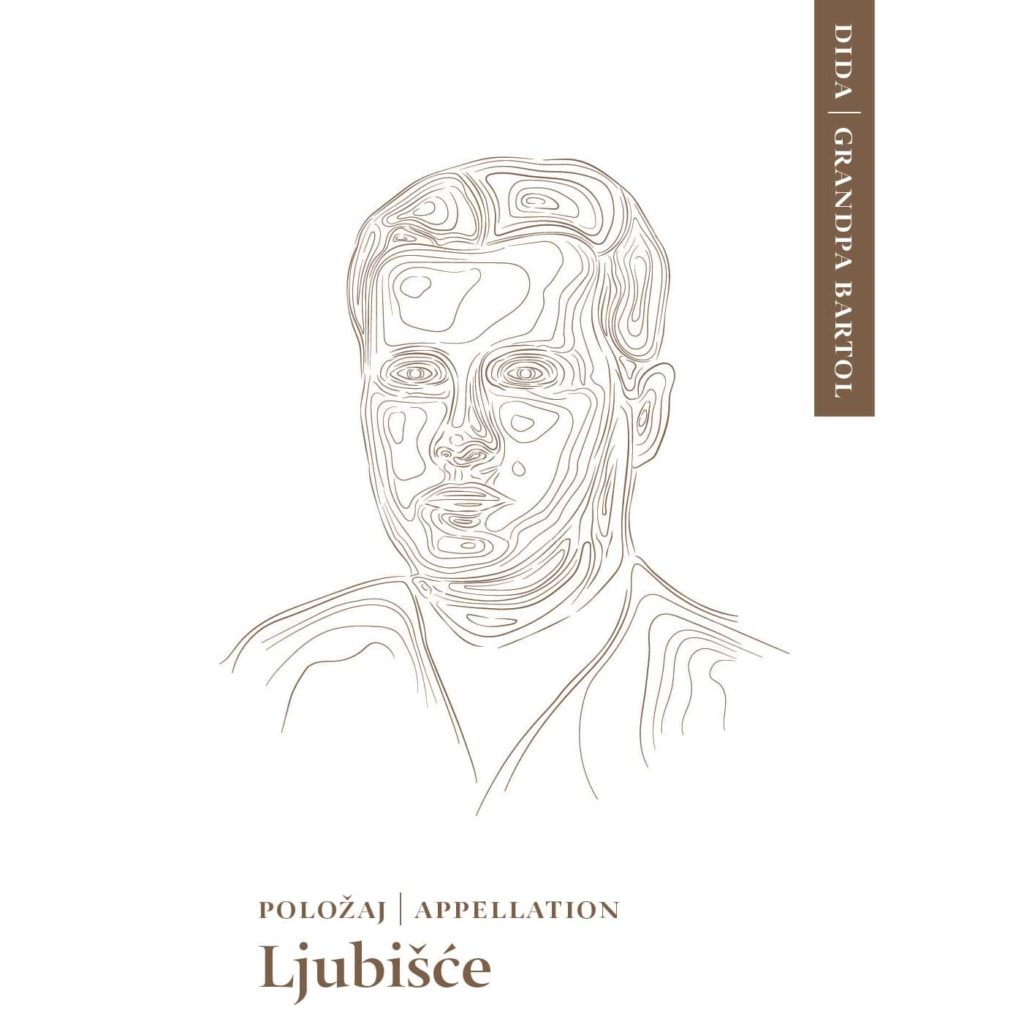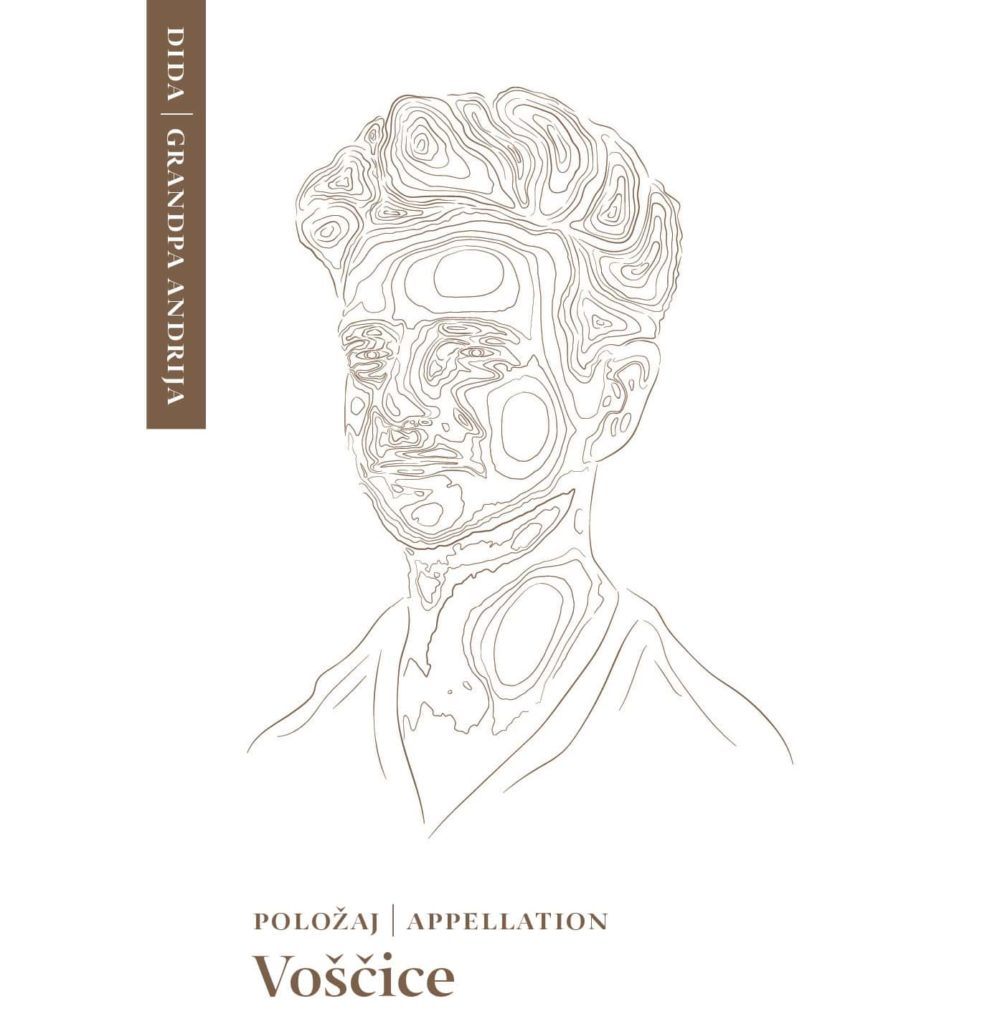Our vineyards
Controlled area of origin: Designation of origin Middle and South Dalmatia
Vineyard: Vis
Climate: Mediterranean with less than 700mm of rainfall per year, over 2700 sunshine hours
The vineyards are cultivated traditionally, without the use of mineral fertilizers or synthetic pesticides, maximally respecting the health of the soil, vines and animal life.
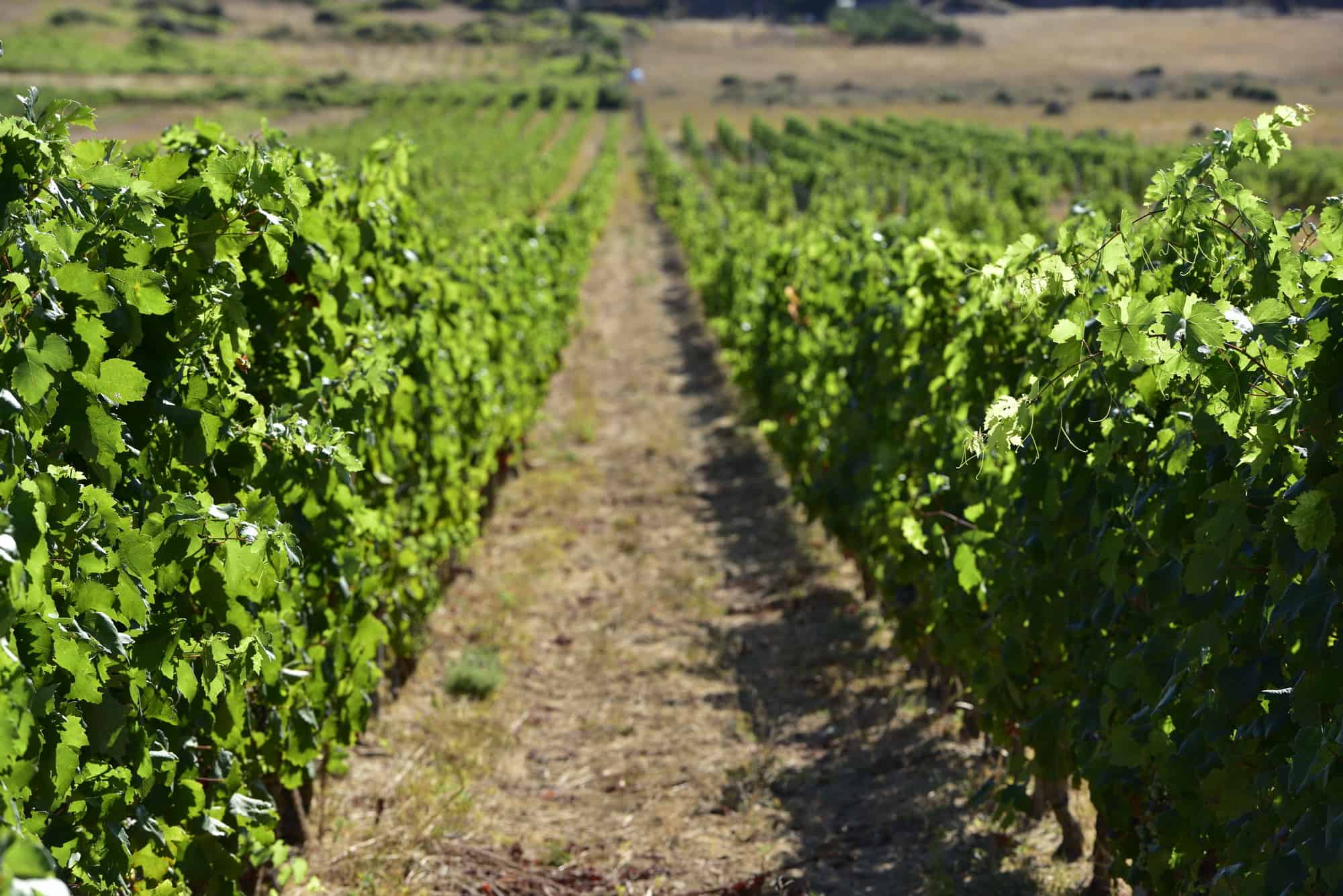
Dračevo polje appellation
Variety: 70% Vugava, 30% Kuč (trbljan bijeli)
Ground composition: Brown soils formed on the basis of Cretaceous Dolomites and limestone
Elevation: 145 m above sea level
Vislander wines from the Dračevo polje appellation are under the label of grandma Jelenka.
Bugava
A white autochthonous variety characteristic for the island Vis. It’s a historically well-known and famous variety, a “sleeping beauty” that deserves full attention, and everyone who tries this wine will understand its potential.
Colour: A golden-yellow colour with a golden sheen
Aroma: A very complex aroma characteristic for Vugava, fruity aromas of stone fruits such as peach and ripe apricot, flow into a slightly smokey herbal note of mediterranean plants and thyme.
Taste: It has a medium strength, well-rounded body with a balanced alcohol content that follows the structure of the wine with a soft and elegant freshness which is the result of the carefully selected time of harvest, and retains the fresher tone of the variety. In the mouth it is elegant and seductive with discreet notes of flower honey, persuasive and steadfast.
Resting potential: 2 – 3 years
Serving temperature: 12 – 14°C
Wine that matures in inox tanks is prevented by malolactic fermentation to preserve the malic acid that carries the freshness of the wine, while the part of the wine that goes to sur-lie is inoculated with malolactic bacteria that break down malic acid, but not citric acid, which achieves a higher creaminess of the wines with partially preserved freshness.
Ideal wine with Vis specialities such as: fried fish, boiled fish, seafood risotto, raw urchin and limpet, fava beans and artichoke, octopus and potato salad, fish stew, fish and potato stew, barley with cuttlefish, wild asparagus and prosciutto frittata, semi-mature sheep and goat cheese with fresh figs and grapes.
Sparkling wine
Kuč (Trebbiano) was chosen as the base variety, which produces fresh, lighter wines with pronounced acidity, which is the ideal base for sparkling wines. Vugava, harvested at the moment of technological maturity suitable for the production of sparkling wines, was added to the white sparkling wine, along with Kuč as the main variety.
The base wine for the rosé sparkling wine is produced from Kuč as the main variety and Plavac from the Voščice vineyard, which is characteristic for producing lighter Plavac with a more pronounced acidity.
Sparkling wine is produced using the classic method of secondary fermentation in the bottle. After the primary fermentation, the base wine with the addition of yeast and sugar (liqueur de tirage) is bottled for secondary fermentation. The bottles should age for at least one year. Before disgorging, the bottles are riddling from horizontal to vertical in a pupitres and the resulting sediment settles in the neck of the bottle. Through the process of disgorging, the sediment that was created in the secondary fermentation is prepared for removal by freezing the tops of the bottles at -25 °C, after which the bottles are opened and the sediment is ejected by the created pressure. The bottles are then filled with expedient liqueur, topped up and closed with special cork stoppers on which agraffes (wire nets) are placed to secure the stoppers, since the bottles are under pressure.
The richness of the Vis terroir is experienced in every drop of our Vugava and Plavac. And when the Vugava from Komiža’ slope and the Plavac from Vis’ slope are joined with Kuč (Trebbiano), the first island sparkling wines are created.
Light, refreshing, airy wines, ideal for enjoying in your most important moments.
Colour: Greenish yellow
Aroma: Fresh, with fruity aromas of apricot and pear
Taste: Harmonious, intense and pleasantly long-lasting lingering with playful acids on the palate, delicate fruit flavors and a discreet finish of fried nuts make these first sparkling wines from the island ideal for any festivity but also everyday occasions.
Recommended serving temperature: 6 – 8 °C
The richness of the Vis terroir is experienced in every drop of our Vugava and Plavac. And when the Vugava from Komiža’ slope and the Plavac from Vis’ slope are joined with Kuč (Trebbiano), the first island sparkling wines are created.
Light, refreshing, airy wines, ideal for enjoying in your most important moments.
Color: Soft pink
Aroma: Fruity, red berry fruit with some Mediterranean herbs
Taste: Harmonious and pleasantly long-lasting lingering with playful acids on the palate and delicate fruit flavors with a little dry Mediterranean herbs make these first sparkling wines from the island ideal for every festivity and everyday occasions.
Recommended serving temperature: 6 – 8°C
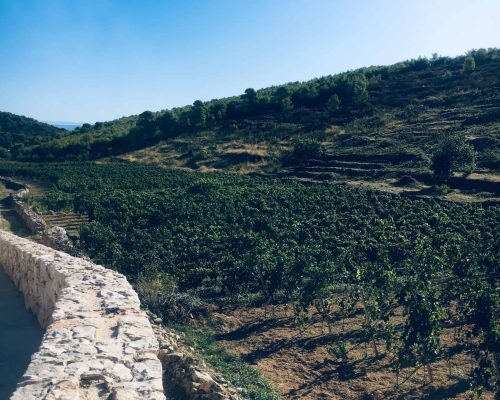
Milna appellation
Variety: 100% Plavac mali
Ground composition: Skeletal soil covered with colluvial sediment
Elevation: 25 – 50 m above sea level
Vineyard size: 2.052 ha / 4210 vines per ha
Vineyard age: 50% older than 15 years
Yield per hectare: 3600 kg
Yield per vine: 0,85 – 1,00 kg
Vislander wines from the Milna appellation are under the label of grandma Franka. Vislander Rosé is under the label of grandma Jelica.
Plavac mali
Colour: Dark ruby colour with a purple sheen.
Aroma: It has a complex aroma with the recognizable fruity notes of the Plavac mali with its characteristic black currant and dry plum notes, as well as the herbal notes of mediterranean plants that make it exceptionally seductive.
Taste: Its powerful structure carries tannins with ease and leaves a harmonious taste of warm sand of Vis vineyards and the noble variety of Plavac mali in the mouth.
Aging potential: 6-8 years
Serving temperature: 16 – 18°C
Macerating on solids and fermentation take 8-12 days in fermentation tanks with a controlled temperature of 24 – 28 degrees Celsius. During the vinification process, it is combined with one part of selection yeasts and non-saccharomyces + autochthonous yeasts, which gives the wine the highest possible concentration of terroir of Plavac. The first two days the Délestage is done (the process of draining the juice from the must that is again returned by soaking onto the solids) for better extraction of colour and aroma and oxygenation (irradiation) which softens the tannins abundant in Plavac, while stirring the solids 4 times a day until the end of fermentation.
Part of the wine goes through malolactic fermentation in inox barrels with the inoculation of Lactobacillus plantarum, and partly spontaneously.
After fermentation ends, the wine rests in inox barrels for 100 days. After that the wine rests in small 225L oak barrels (barrique) (a combination of entirely new and once used Slavonian and French oak). After removal from wooden barrels the wine rests for an additional 8 months in inox tanks and 4-6 months in bottles after bottling.
Enjoying wine with Vis specialities such as: salted fish pie, pasta e fagioli in a fish stew, grilled lamb, tuna/greater amberjack on the grill, grilled european pilchard, wild game (pheasant and rabbit), roasted lamb under the bell, pašticada and Drniš prosciutto and matured Pag cheese.
Rosé
Colour: Rosé is an intensely red-gold colour that calls for a taste.
Aroma: Its aroma pops with the notes of pomegranate flowers, cranberries and raspberries in the background.
Taste: In the mouth one can taste the playful acidity that gives an interesting balance to the wine, compared to its concentrated taste of the full-blooded southern rose. On the palate one can feel a seductive sweet touch, although the wine is completely dry, and that sweet spot has merged ideally with its character and the velvety tannins of the Vis plavac. A layered wine to be remembered, it can perfectly fill up and accompany any table, but also provide pleasure by itself in good company.
Aging potential: 1 – 2 years
Serving temperature: 14 – 16°C
Vines in the vineyard are selected for higher yields and whose clusters have fuller grapes. Doing so means that already in the first step the softer, gentler part of the plavac mali is separated. Depending on the year and vintage a cold maceration is done at 8 – 10°C
for 2 – 4 hours. Doing so we achieve the primary aromatics and desired rosé colour. The separated free-run wine goes at pre-clarification which lasts 24 – 36 hours at a temperature of 12°C.
After the separation of the pure juice from the solids, fermentation is started in medium low temperatures of 12 – 16°C and usually lasts between 12 and 18 days.
Malolactic fermentation is not carried out in order to preserve the vibrancy of the colour, taste and aroma of the rosé.
After fermentation ends, the wine is stabilized on proteins and tartrates, filtered and aged in bottles for another 90 days.
Ideal wine with Vis specialities such as: boiled fish, seafood risotto, raw urchin and limpet, fava beans and artichoke, octopus and potato salad, fish stew, fish and potato stew, barley with cuttlefish, wild asparagus and prosciutto frittata, semi-mature sheep and goat cheese with fresh figs and grapes.
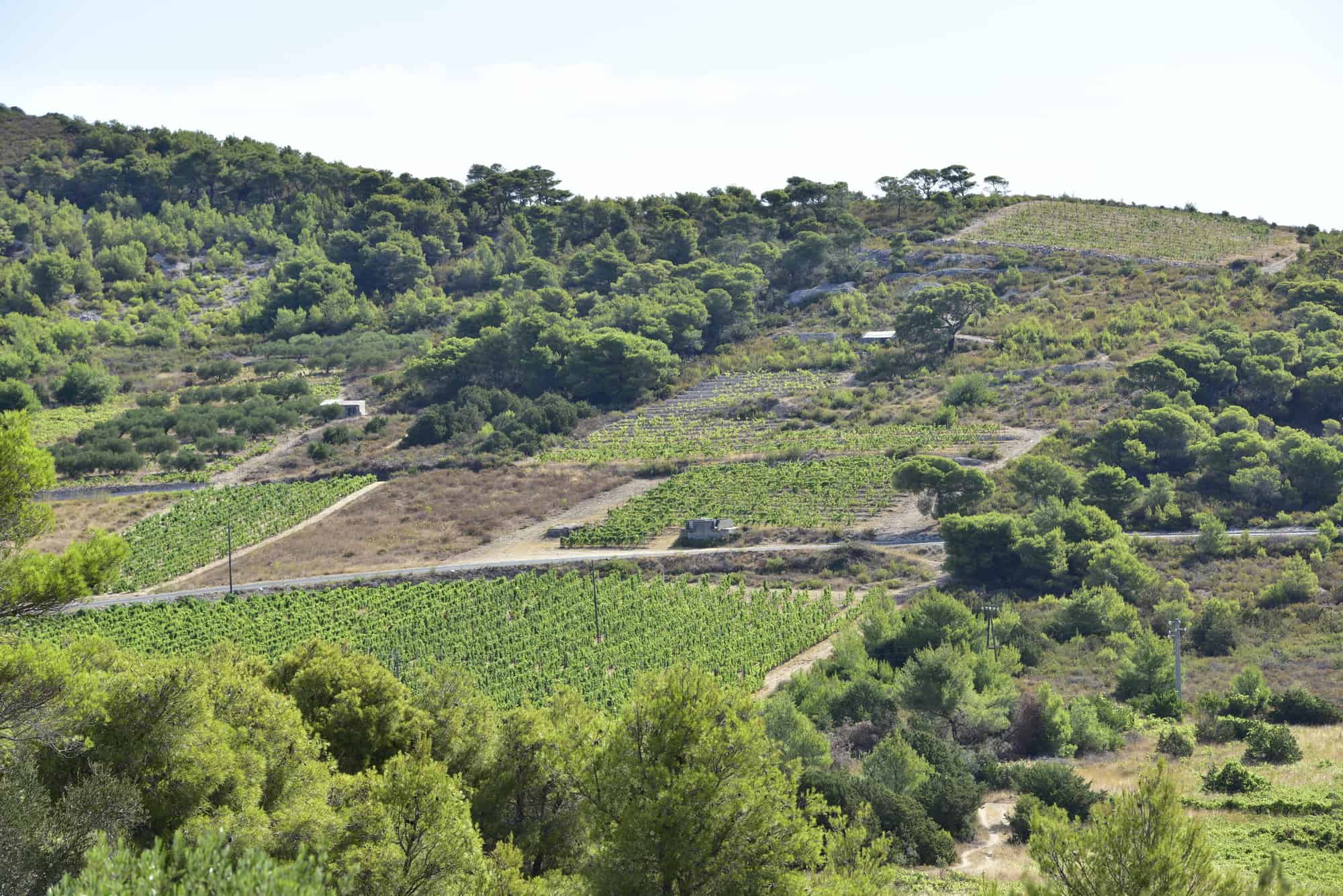
Tihobraće polje appellation
Variety: 100% Plavac mali
Ground composition: Karst field
Elevation: 10 – 60 m above sea level
Vineyard size: 3.260 ha / 5318 vines per ha
Vineyard age: 50% older than 15 years
Yield per hectare: 4500 kg
Yield per vine: 0,85 – 1,00 kg
Vislander wines from the Tihobraće appellation are under the label of gradpa Jure.
Plavac mali
Colour: Dark ruby colour with a purple-brown sheen.
Aroma: A recognizable fruity aroma with notes of black currant and dry plum, as well as the herbal notes of mediterranean plants.
Taste: Its powerful structure carries its high sugar content and tannins with ease and leaves a harmonious taste of the warm sand of Vis vineyards and the noble variety of plavac mali with a slightly smoky note.
Resting potential: 4 – 6 years
Serving temperature: 18 – 20°C
Macerating on solids and fermentation take 8-12 days in fermentation tanks with a controlled temperature of 24 – 28 degrees Celsius. During the vinification process, it is combined with one part of selection yeasts and non-saccharomyces + autochthonous yeasts, which gives the wine the highest possible concentration of terroir of Plavac. The first two days the Délestage is done (the process of draining the juice from the must that is again returned by soaking onto the solids) for better extraction of colour and aroma and oxygenation (irradiation) which softens the tannins abundant in Plavac, while stirring the solids 4 times a day until the end of fermentation.
Part of the wine goes through malolactic fermentation in inox barrels with the inoculation of Lactobacillus plantarum, and partly spontaneously.
After fermentation ends, the wine rests in inox barrels for 100 days. After that the wine rests in small 225L oak barrels (barrique) (a combination of entirely new and once used Slavonian and French oak). After removal from wooden barrels the wine rests for an additional 8 months in inox tanks and 4 – 6 months in bottles after bottling.
Ideal wine with Vis specialities such as: salted fish pie, pasta e fagioli in a fish stew, grilled lamb, grilled tuna/greater amberjack, grilled european pilchard, wild game (pheasant and rabbit), roasted lamb under the bell, pašticada and Drniš prosciutto and matured Pag cheese.
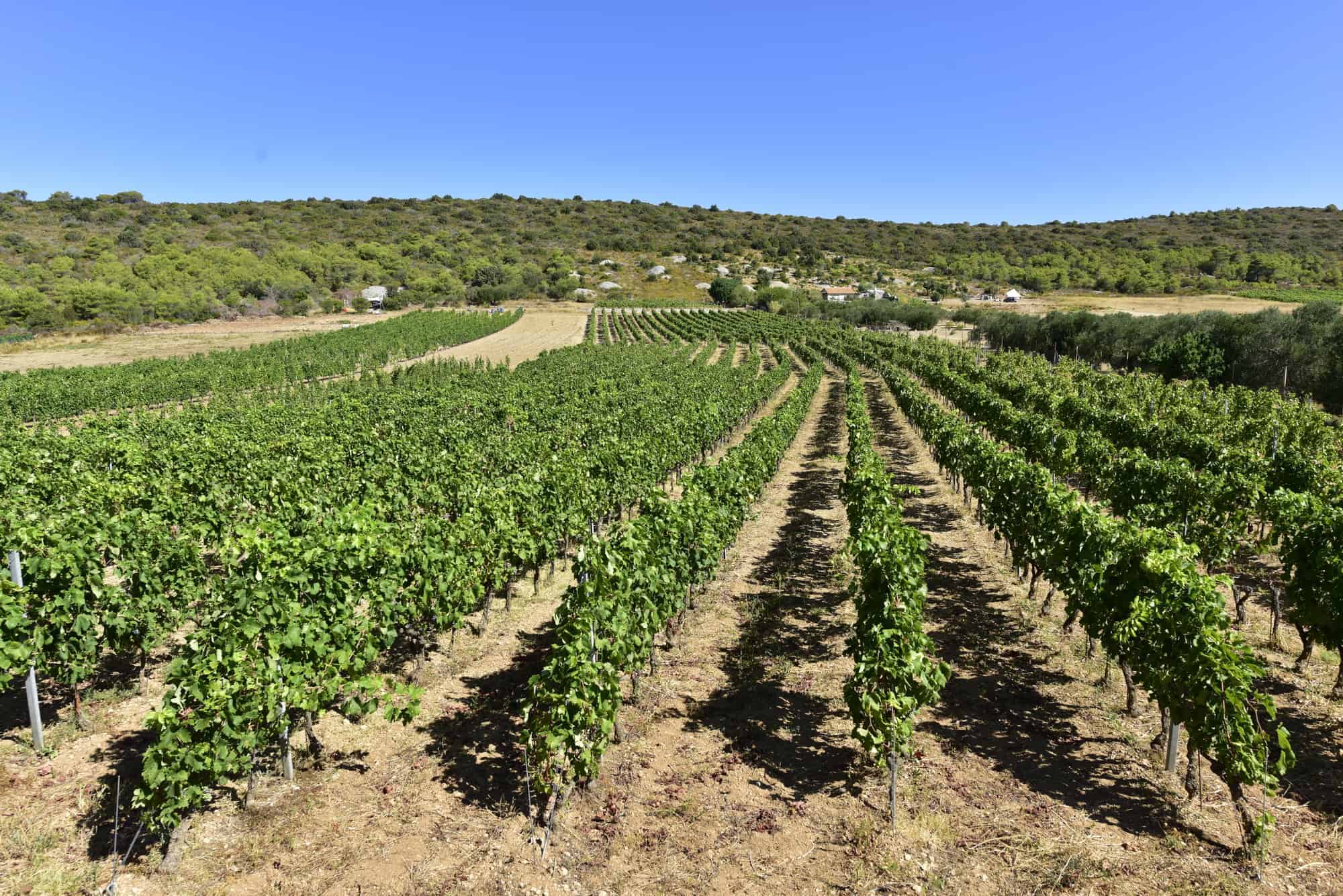
Ljubišće appellation
Variety: 100% Plavac mali
Ground composition: Skeletal soil covered with colluvial sediment
Elevation: 120 m above sea level
Vineyard size: 1.000 ha / 6500 vines per ha
Vineyard age: 85% older than 15 years
Yield per hectare: 8000 kg
Yield per vine: 1,25 kg
Vislander wines from the Ljubišće appellation are under the label of grandpa Bartol.
Plavac mali
Colour: Medium deep, intense ruby colour.
Aroma: A dazzling combination of sophisticated and gentle wild berry aromas and herbs, with a
mild note of leather and smoke gained by maturation in wooden barrels.
Taste: Lively, delicious taste with a seductive, slightly tart finish makes it a perfect starter wine.
Aging potential: 3-6 years
Serving temperature: 16 – 18°C
Macerating on solids and fermentation take 8-12 days in fermentation tanks with a controlled temperature of 24 – 28 degrees Celsius. During the vinification process, it is combined with one part selection yeasts and non-saccharomyces + autochthonous yeasts, which gives the wine the highest possible concentration of terroir of Plavac. The first two days the Délestage is done (the process of draining the juice from the must that is again returned by soaking onto the solids) for better extraction of colour, aroma and oxygenation (irradiation), which softens the tannins abundant in Plavac, while stirring the solids 4 times a day until the end of fermentation.
Part of the wine goes through malolactic fermentation in inox barrels with the inoculation of Lactobacillus plantarum, and partly spontaneously.
After fermentation ends, the wine rests in inox barrels for 100 days. After that 60% of the wine rests in small 225L oak barrels (barrique) (a combination of entirely new and once used Slavonian and French oak), 40% rests in large 500L oak barrels (a combination of Hungarian and French oak). After removal from the wooden barrels the wine rests for an additional 8 months in inox tanks and 4-6 months in bottles after bottling.
Enjoying wine with Vis specialities such as: salted fish pie, pilchard risotto, grilled lamb, fried fish, tomato pas, grilled European pilchard, roasted lamb under the bell, snail stew, grilled scampi, pašticada with gnocchi, Drniš prosciutto and matured sheep and goat cheeses with almonds and pistachio.
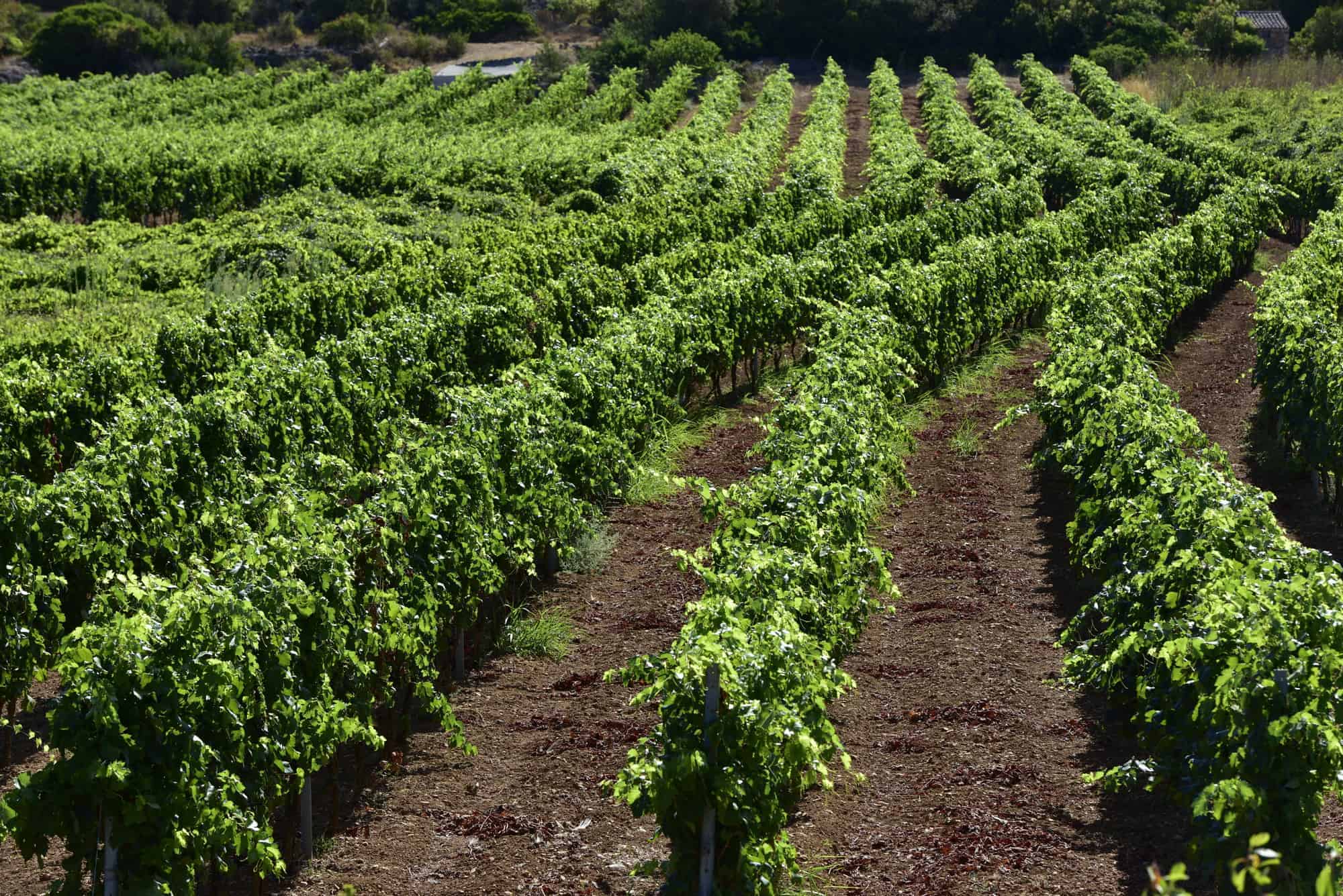
Voščice appellation
Variety: 100% Plavac mali
Ground composition: soil deposits
on the base of Pleistocene sands
Elevation: 90 m above sea level
Vineyard size: 1.200 ha / 6500 vines per ha
Vineyard age: 100% more than 15 years old
Yield per hectare: 8000 kg
Yield per vine: 1,40 kg
Vislander wines from the Voščice appellation are under the label of grandpa Andrija.
Plavac mali
Colour: Gentle ruby colour.
Aroma: Lively fruity aroma dominated by cherries with a hint of dry leaves.
Taste: Medium strong body, refreshing vibrant taste with mildly tannin ending in which one can detect a discrete smoky note
Aging potential: 3-6 years
Serving temperature: 16 – 18°C
Macerating on solids and fermentation take 8-12 days in fermentation tanks with a controlled temperature of 24 – 28 degrees Celsius. During the vinification process, it is combined with one part selection yeasts and non-saccharomyces + autochthonous yeasts, which gives the wine the highest possible concentration of terroir of Plavac. The first two days the Délestage is done (the process of draining the juice from the must that is again returned by soaking onto the solids) for better extraction of colour, aroma and oxygenation (irradiation) which softens the tannins abundant in Plavac, while stirring the solids 4 times a day until the end of fermentation.
Part of the wine goes through malolactic fermentation in inox barrels with the inoculation of Lactobacillus plantarum, and partly spontaneously.
After fermentation ends, the wine rests in inox barrels for 100 days. After that 80% of the wine rests in small 225L oak barrels (barrique) (a combination of entirely new and once used Slavonian and French oak), 20% rests in inox tanks. After removal from wooden barrels the wine rests for an additional 8 months in inox tanks and 4-6 months in bottles after bottling.
Enjoying wine with Vis specialities such as: salted fish pie, pilchard risotto, grilled lamb, fried fish, tomato pas, grilled European pilchard, roasted lamb under the bell, snail stew, grilled scampi, pašticada with gnocchi, Drniš prosciutto and matured sheep and goat cheeses with almonds and pistachio.



